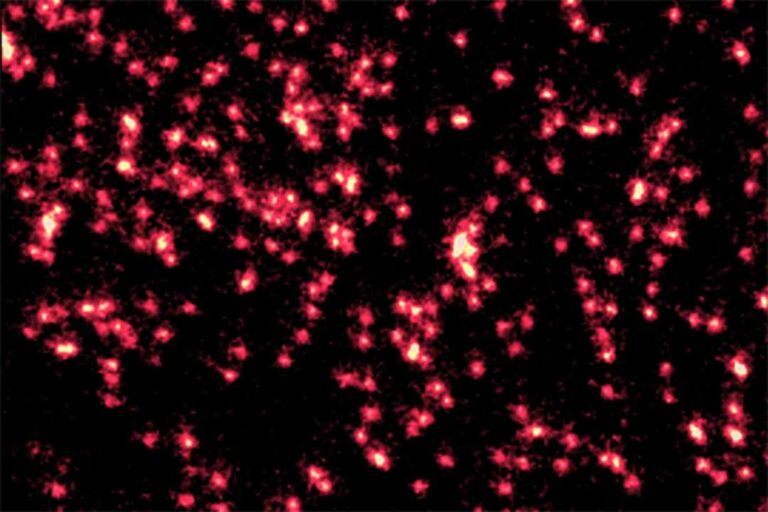Stunning Image Captures Atoms Transitioning into Quantum Waves — Confirming Schrödinger’s Prediction
Scientists led by physicists have captured unprecedented image of individual atoms as waves for the first time.

The image depicts vivid red spots of glowing atoms evolving into fuzzy groups of wave pulses and an ideal example of the notion that atoms are both particles and waves according to quantum mechanics.
The researchers who came up with this revolutionary imaging method have put up their findings on the preprint server arXiv as their study has not been peer-reviewed yet. In their paper, they highlight that matter wave duality is still one of the most surprising phenomenon in quantum mechanics. In addition, they postulate that their new method can be used on more complex scenarios to provide important insights into questions about the nature of reality.
Wave-particle duality, stated by French physicist Louis de Broglie in1924 and developed by Erwin Schrödinger in 1926, postulates that at a quantum level all objects, including matter, can be waves and particles at the same time. Scientists usually take Schrödinger’s famous equation literally by suggesting that atoms extend in space as waves of probability and only materialize as particles when observed. Even though rather obviously illogical, this property of the micro-world was recorded in various experiments.
To illustrate this duality, the physicists first decided to cool the lithium atoms to close to absolute zero. This was done through irradiating the atoms with photons which are light particles coming from a laser, thereby decreasing the momentum of the atoms. After the atoms were sufficiently cooled, other lasers were used to capture the atoms within an optical lattice confining them in packages.
With the atoms now cooled and confined, the researchers went on to periodically switch the optical lattice on and off. This action enabled the atoms to move from a state where they behaved like particles to where they behaved like waves and vice versa.
The researchers were able to photograph the light produced by the atoms in their particulate state at two different time points and the atoms behaved like waves in between. Using multiple images, the researchers were able to build the shape of this wave and see how it spread in time – in correspondence with Schrödinger’s equation.
Tarik Yefsah, a co-author of the study and a physicist at the French National Centre for Scientific Research and the École normale supérieure in Paris said, “This imaging method involves reactivating the lattice to project each wave packet into a single well, turning them back into particles and then they no longer have a wave like behavior What can be described as a means to sample the density of the wavefunction.
The image provided by the scientists is just simplified and is the first step for further developments of obligatory systems with the interacting atoms. These systems are not yet comprehensively understood, and studying them can help scientists improve understanding of strange states of matter. Some of these states are the ones that are found in dense cores of neutron stars and those found in the quark-gluon plasma which it is postulated existed right after the Big Bang, according to Yefsah.
Do not forget to share your opinion with us to provide you with the best posts !




0 Comments